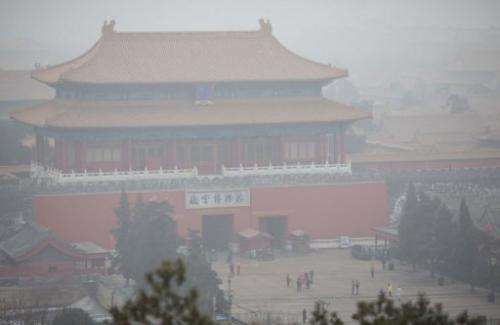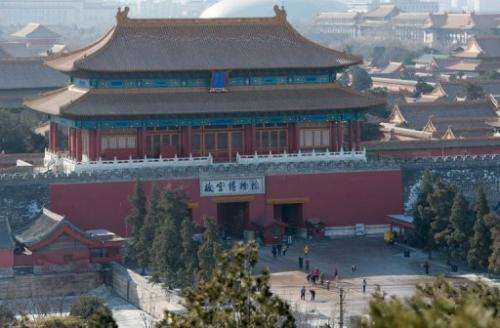China to more than double air monitoring network

China will more than double the number of cities covered by air quality monitoring, a top environment official said Friday, as part of efforts to tackle heavy smog that has sparked huge public anger.
Swathes of acrid haze have repeatedly shrouded large parts of the country in recent months, provoking outrage among Internet users and unusually outspoken calls for action in state-run media.
By the end of this year China will release statistics for concentrations of PM2.5—tiny particles that penetrate deep into the lungs—in a total of 190 cities, up from 74 in January, said Wu Xiaoqing, a vice minister of environmental protection.
The move "will provide an effective measure to supervise local governments at all levels to make up their mind in addressing air pollution," he said on the sidelines of China's annual parliament session, the National People's Congress.

China's leaders have repeatedly stated the importance of cutting pollution, but responsibility for reducing emissions falls to bureaucrats at local levels, where economic growth usually takes precedence and laws can be compromised by bribery.
The move would help people "learn about local air quality in a timely, faithful and accurate manner", Wu added.
He said the government had set a target to cut the PM2.5 density by six percent by 2015 from 2010 levels in key areas including Beijing and the industrial powerhouses of the Pearl and Yangtze river deltas.
During recent bouts of pollution the capital has seen particulate levels almost 40 times World Health Organisation (WHO) limits, and the pollution is inflicting a heavy toll on both human health and economic activity.
Nearly half of China's emissions of PM2.5 come from coal burning, with the rest mostly from vehicle emissions and construction.
The US embassy in Beijing releases its own pollution data for readings from its monitor which sometimes differ from official figures.
(c) 2013 AFP





















